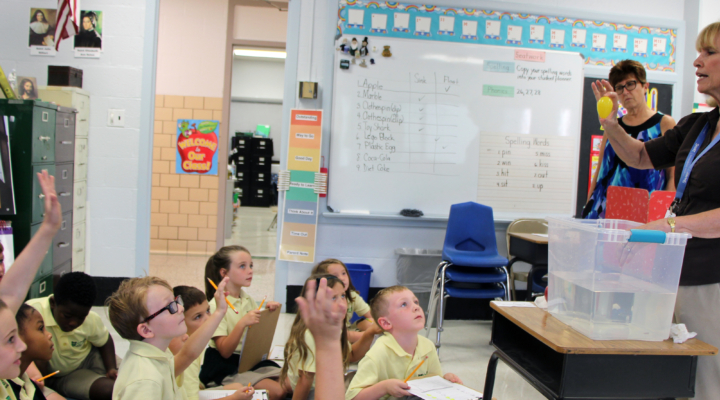
First Grade Scientists Make Predictions
In Science class, first grade students have been learning to make predictions. Teaching students about prediction-making is a great age-appropriate way to introduce the concept of creating a hypothesis. The students have also practiced their scientific skills by categorizing a variety of objects according to observable characteristics.
Prior to participating in a hands-on learning activity, each child predicted whether a list of items including an apple, clothespins, a Duplo or Lego block, a toy dolphin, and cans of soda (one of which was diet) would float or sink. After working independently to make their decisions, the students paired with a partner to put their predictions to the test by completing a series of small tests or experiments at various stations in their classrooms.
During their exploratory learning processes, the children were occasionally surprised to learn that their predictions were wrong. They were also very surprised to discover that a toy building block like a Lego or Duplo will initially float but eventually sinks. According to Mrs. Brett, “One of the most important parts of this activity is for the students to understand that their predictions can be wrong, and that based on an experiment, or trial and error, they can learn how to make more informed predictions in the future.”
The first grade students also realized that scientists go back to their predictions (hypothesis) to create new predictions and new experiments which test what they believe. This hands-on experiment also helps students devise their own ideas about physical properties and how they can be used to describe and categorize objects.